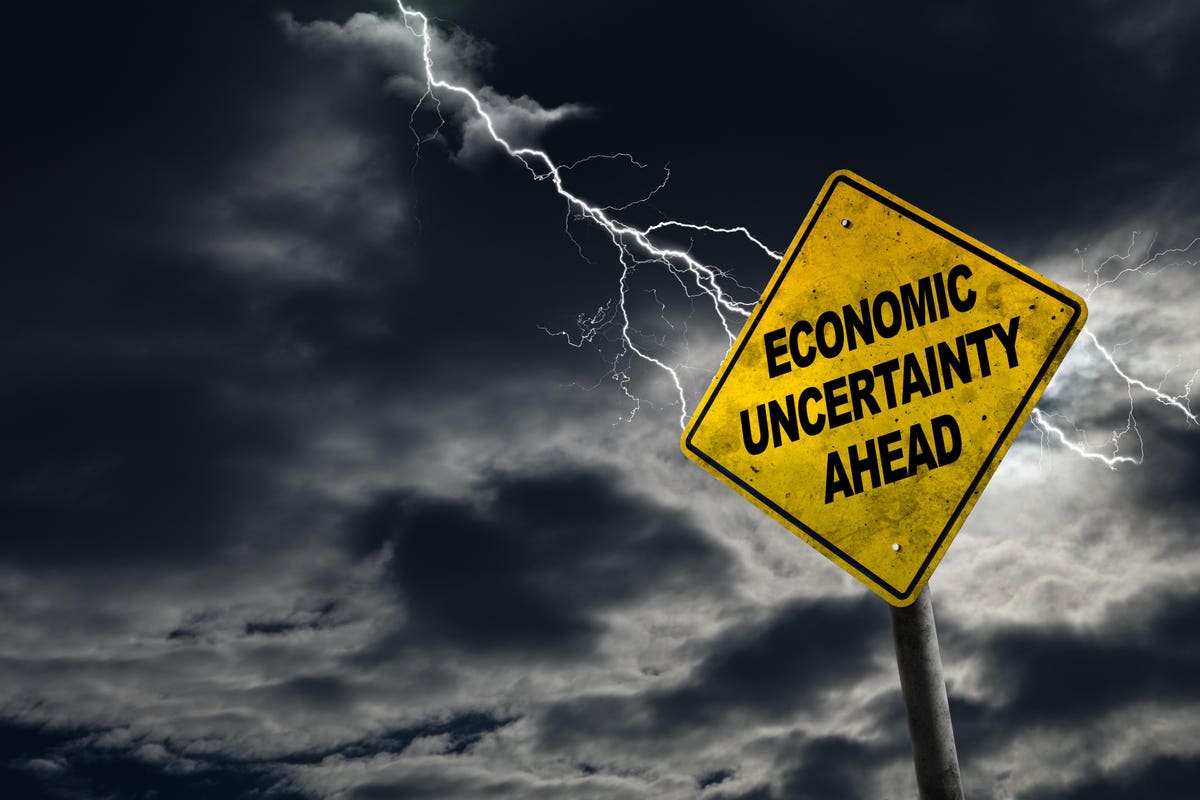In 2022, most asset prices plunged together, leaving investors nowhere to hide, but in 2023, we have nearly the opposite. For example, the S&P 500 is up more than 7% year to date, while the tech-heavy Nasdaq Composite is up an impressive 20%. Meanwhile, the gold price is up by about $200 an ounce over the six months, and bond yields are ticking higher.
Nonetheless, fears of a recession are very real and increasing among Americans, with more than half saying in a recent survey that they would lose everything in the event of a recession. A recession has traditionally been defined as two consecutive quarters of declining gross domestic product (GDP), which occurred in 2022.
However, this technical definition has been softened over the years, and it’s easy to see why. The GDP rose 2.9% in the fourth quarter, but most people are pessimistic about the economy. Meanwhile, many market watchers point to signs that the economy might not be as strong as the headline economic numbers would have us believe.
Red flags suggest a recession is near.or example, despite the rising asset prices, the Treasury yield curve is currently inverted, meaning that short-term interest rates are higher than long-term ones. When the yield curve inverts, a recession typically follows. With such a glaring red flag suggesting a recession is coming, it’s natural to question just how much longer it will be before the music stops, leaving people scrambling for a seat.
Thus, it would be wise for consumers to take their cues from someplace other than asset prices, which may be artificially high due to other factors than the economy. In fact, consumer sentiment in the U.S. is exceedingly low with 75% of Americans saying they are afraid that a recession will hit this year.
Meanwhile, 69% say the U.S. is already in a recession. Additionally, 55% of Americans say they would lose everything in a recession. Thus, consumers would do well to start preparing for a recession if they haven’t already done so. Here are some steps you can take to start getting ready.
Deal with debt.The headline inflation numbers have been decelerating after peaking at around 9% last summer. However, the process has been slow, with the April 2023 reading showing a 4.9% year-over-year increase in the consumer price index. Although that was less than expected, many consumers continue to resort to desperate measures just to get by — turning to credit cards to pay for the essentials.
In the fourth quarter, credit card debt in the U.S. rose 18.5% year over year to a new record high at $931 billion, according to TransUnion’s
TRU
Dealing with debt early and often in the event of a recession is critical to keep it from quickly spiraling out of control. Credit card debt has some of the highest interest rates, so it’s never advisable to carry a balance from month to month.
Unfortunately, as the Federal Reserve continues to raise interest rates, the available options for improving your debt situation will continue to worsen. The ideal option would be to consolidate your credit card debt into one loan with a (hopefully) low fixed interest rate that won’t continue to rise as the Fed raises rates.
In dealing with all of your debt, the typical rules of thumb apply. Pay off your debt with the highest interest rates first, making the minimum payments on each debt except the one you’re focusing on paying down, starting with the highest-rate credit card or debt before moving to the next.
Other tips involve paying off the smallest debts first as a way to consolidate your debt or taking out a debt-consolidation loan.
Cut your costs by digging deep.Of course, digging yourself out of debt will only have a lasting impact on your financial situation if you’re also working on cutting your costs. Take the time to look at every expense you have over the last two months to see which ones you can eliminate. For many Americans, those daily trips to their local coffee shop can really put a dent in their monthly income.
Given how expensive groceries have become, you might even need to examine a month’s worth of receipts to see which items have increased in price and by how much. Then you can start looking for cheaper alternatives to those grocery items and eliminate entirely those you can live without.
Assess your savings and investments.Whether you have saved a lot or a little, you can take some steps to maximize the benefits you receive from your holdings. This can be as simple as shifting your savings from an account at your local bank, which may not have a very attractive interest rate, to a high-yield savings account, certificate of deposit (CD), or money market account. All of these options offer much higher rates than a standard savings account, so the time to shop around is when interest rates are rising.
If you have one or more retirement accounts, you might consider converting them to Roth IRAs, just in case you get laid off or have to live on reduced hours. Years of lower-than-usual income are the ideal times to do a Roth conversion. Money in a Roth IRA grows on a tax-free basis, so if you do the conversion in a year when you have less income, you’ll likely pay a lower tax rate on the balance at the time of the conversion.
Additionally, placing your money in a Roth can offer protection against the worst-case scenario. You can withdraw your contributions to the Roth without having to pay a penalty. A penalty does kick in if you withdraw any of the earnings on those contributions before the account’s been open for five years. However, withdrawing from a traditional IRA will trigger a hefty penalty. Thus, a Roth IRA could come in handy if you’re out of work for an extended period due to a recession and need penalty-free access to your retirement funds.
As far as your non-retirement investment portfolio, it’s best to stay the course — to some degree. It’s not advisable to exit the markets entirely, although you might want to tweak your allocations somewhat. You probably will want to leave as much of your money in the markets as you can afford to do because the prices of those assets should start rising again — eventually.
You don’t want to miss out on all those gains because you withdrew your money when prices were down. It may be wise to speak with a financial advisor about your investment portfolio to see if any minor adjustments should be made to try to maximize the gains you might see on the flipside.
Go back to the basics, but don’t fear the future.Although we’ve seen extended periods without any, recessions are an inevitable part of the business and economic cycles. Such downturns can be highly stressful and rattle your world, but they offer a great time to go back to the basics by reevaluating or reestablishing your budget.
Surviving a recession with minimal losses may or may not be possible, but no matter what happens, preparing for the inevitable should help cushion the blow.
Read the full article here













